UAVs in the post-Afghan era (part 1 of 3)
Spectacular view of the X-47B, sitting down with an arrestor on board the aircraft carrier Harry Truman
Attitude to drones (unmanned aerial vehicles or UAVs) is changing due to the withdrawal of troops from Afghanistan and a shift in attention to the Asia-Pacific region. The relative freedom with which drones were operated over Southeast Asia will be replaced by severe restrictions on their use in the airspace of the owner countries, where integration with manned aviation gives rise to many (so far) unsolved problems.
In addition, the transition from a non-competitive environment to an environment in which (in the event of war) a high-tech enemy will use advanced weapon systems to prevent the access of drones will change priorities and highlight durability rather than cost. Such a change of priorities will serve as a catalyst for the development of low-profile and hypersonic drones and may lead to premature write-off of a large number of suddenly outdated products, although it is possible to produce them for carefully selected segments of the international market.
Many countries critically evaluate America’s use of armed drones, which (while collecting information by electronic means and humans) have proven to be a cost-effective way to neutralize terrorist groups, albeit without any indirect loss or damage.
There are doubts about the legality of drone strikes, especially outside the designated conflict areas. Indeed, some commentators would like to see the political and military leaders responsible for these attacks in court for war crimes.
In this regard, some leading NATO countries formalize their attitude to armed drones, which many observers associate with the inevitable development of anti-aircraft systems and the increased value of human life (their own or allied forces).
Some countries with a colonial past buy drones that are suitable for use only in an undisputed space, perhaps anticipating their long-term “commitment” to intervene in African affairs, at least in order to maintain access to mineral deposits.
If you look further into the future, some European countries are already involved in the development of projects for modern Ucav (strike drone or attack drone), considering them not only as natural heirs of manned attack aircraft and, ultimately, fighters, but also quality of the available means of maintaining high-tech aerospace formations.
As more and more countries in the world buy more and more effective drones, one question is worth billions of dollars: who will supply such drones to oil countries that the United States does not want to see among the operators of these systems? Something similar could be seen at that time in the fighter market, when America tried to ban many F-5 light buyers from many foreign buyers. Who will provide an equivalent replacement for yesterday's Dassault Mirage fighter as a drone of today?
The latest world developments
International developments and cooperation are now becoming so widespread that it is sometimes difficult to determine their true location, if not the continent. This is especially true for small and medium types, although the tendency will inevitably extend to larger sub-Male or Male classes (Medium Altitude Long Endurance - medium-high with a long duration of flight), which, as will be explained later, can leave Europe on the sidelines European countries will continue to disagree on the overall project. Many of them will end up buying the drones of these classes from America or Israel, which is the height of absurdity - especially when some countries, such as France and Germany, have gained quite valuable experience in the field of large drones, especially with Sagem Patroller, which today no breakdowns (at least nothing is known about them) flew a sufficient number of hours on 23 flights.
The Patroller drone, based on the Stemme motor-glider, currently flies with the Euroflir 410 opto-electronic station “enhanced capabilities”, which is in no way inferior to the characteristics of the best products of the L-3 and Flir companies. Simultaneous transmission of image and radio survey data was demonstrated on 23 flights in the middle of 2013.
The X-NUMX kg R-Bat is being promoted by Northrop Grumman and Yamaha as a data acquisition and surveillance drone capable of carrying onboard 93 kg equipment. The length of the drone 19,5 meter, the flight duration is over 3,65 hours, and the distance of the communication channel 4 km
Recent examples of this international technology exchange include a statement on the Rotary Bat helicopter drone, made in early May 2014 by Northrop Grumman. The R-Bat (shortened name) device combines the rotary-winged scheme developed and manufactured by Yamaha, and Northrop Grumman's extensive experience in the field of control equipment and information gathering; especially its experience with Fire Scout drones for the US Navy - both based on Schweizer and Bell Helicopter. Yamaha Rmax (the original designation of the project) also has a lot of experience, because in the farmland sprayer version it seems to have flown more than the spirit of millions of hours over more than a million hectares of Japanese fields.
Literally on the heels of R-Bat, another newcomer from “mixed DNA” appeared in the form of the Apex drone from L-3. In Apex, the wing and fuselage without a tail are one with downward wing tips; with its nasal auxiliary wing (not the nose wheel), it is very similar to the reduced Harpy and Bat hybrid - only slightly smaller and electrically driven (with the permission of the Czech company Axi). The case of the device is actually based on the miniArbiter drone of Israeli Aeronautics, the wingtips of which are directed upwards; He proved himself well and was sold to many countries. Apex is currently offered with the Controp T-Stamp optoelectronic station on a pan-tilt head, but American equipment can be installed on it using the interface developed by L-3.
The T-Stamp system uses a cooled infrared sensor, the excessive power consumption of which compared to that of an uncooled thermal imager (according to L-3) slightly reduces the seven-hour flight time. Reduced flight duration is offset by higher resolution, which offers a cooled sensor. More impressive news is that, according to L-3, the Apex drone over the past year and a half has already been demonstrated to several potential buyers, and that it was bought by a US government agency.
The third on this list of newbies is Arrow Lite; It is produced by Stark Aerospace, a division of Israel Aerospace Industries (which actually manufactures the famous Hunter for Northrop Grumman).
The manual launch drone was designed with the specific goal of providing “a tactical operations support program manager and counter-terrorism technical support management” with surveillance tools for use by “special operations and tactical units”. Despite its relatively recent appearance, Arrow Lite is already being actively exploited. To date, 13 systems have been supplied, including 39 aircraft and ground equipment. It is assumed that the customer is the US Army.
The announcement of the new drone appeared a few days after Stark Aerospace installed a new Stark Lite 200 optical-electronic system. In fact, this biaxial light optic electronic station was developed by Next Vison under the name Orion. This Israeli company has signed an agreement with Stark Aerospace to promote the system in the United States under the designation Stark Lite.
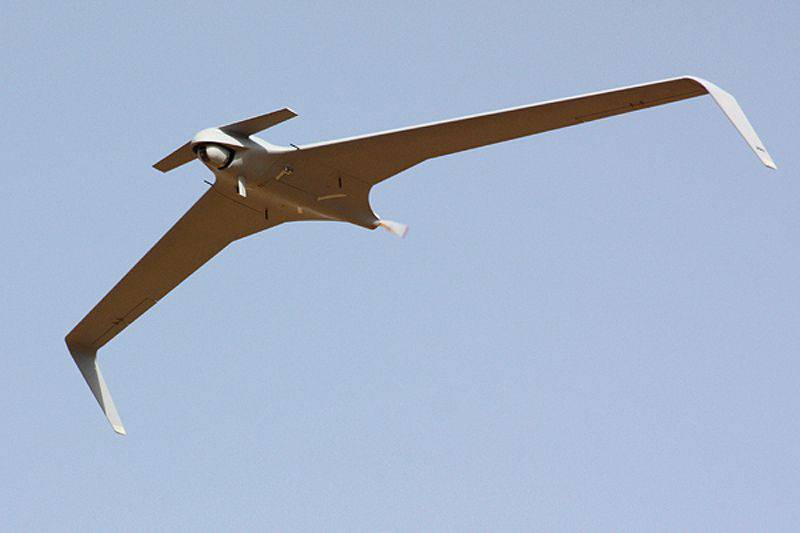
The launch of the L-3 Apex drone is carried out from a catapult mounted on a trailer, and the return by parachute. It has a mass of 28 kg, wingspan 4,2 meter, the range is over 100 km. Its Czech Axi electric motor is powered by a lithium-ion battery - a bold decision that allows you to get the flight duration comfortable 7 hours
According to the Stark company, unpacking from a waterproof container and preparing for flight of a new Arrow Lite weighing 6,6 kg takes a minute and a half. An optoelectronic station is installed on the drone with an electric drive with stabilization along two axes
The Stark Lite system, also known as Orion, has a high-resolution daytime camera capable of delivering images up to 10 megapixels, a near-infrared infrared camera with a resolution of 640x480 and a 300 mW laser; all this weighing 240 grams
The picture shows the Asio-B with its management console and communication channel, which will soon enter service with the Italian intelligence units. Batteries are installed in the upper cruciform structure
Italian affairs
After the small company Utri was taken over by the industrial giant Selex ES from Trieste, the micro and mini guns of the young company quickly went from prototypes to fully industrial products; The first vehicles are currently supplied to the Italian army.
Acquired as part of the army digitization program, known as Forza NEC, the two micro-orthodrones were deeply modified according to the terms of the customer. The first to receive the Spyball-B microdron is the middle brigade “Pinerolo”, which is armed with the Freccia 8x8 machines.
Spyball-A had two oppositely rotating rotors with fixed blades, each screw driven by a brushless motor. Although the new unit B has retained the circuit with a ring fairing, it differs by one twin variable pitch screw and one motor; the torque twisting moment is controlled by fixed stabilizers in the lower flow guide. According to the engineers at Selex ES, these changes identified two factors. The first one is the lack of reliable mathematical models for modeling the aerodynamic interference of oppositely rotating screws, the second is the best control of the roll and pitch provided by the blades with variable pitch. Spyball-B could lose part of its name “ball” due to the above-mentioned modifications. Its take-off weight almost doubled to two kilograms, the outer diameter increased from 250 mm to 480 mm due to the length of the fan in the 356 ring radome. The horizontal speed doubled from 4 to 8 meters per second. The drone’s on-board equipment is pointing downward and includes a camera with 0,025 lux sensitivity, 640x480 resolution and 46 ° field of view; it may be replaced by an uncooled thermal imager with 320x240 resolution. Lithium-polymer batteries installed in cross-type crossmembers above the propeller provide a flight time of half an hour, the range of the device is approximately 2,5 km.
Spyball-B with all its ground systems is supplied to the infantry units of the Italian army
Crex-B is currently in the process of qualification and must change Aerovironment Raven-A and Raven-B, which are in service with the intelligence brigade. It is quite possible that a Crex-BK drone with higher characteristics, a larger wingspan and a flight duration of more than 100 minutes, which can simultaneously carry two different surveillance devices, will soon join it.
The larger four-legged Asio-B unit will soon arrive in the intelligence units of the Italian army, it also features a single propeller with variable pitch, but with three blades. Net weight increased from 5,5 to 6,5 kg, while net payload increased from 0,8 to 1,5 kg. The outer diameter is 620 mm versus 450 mm in variant A. The height is somewhat reduced, 0,6 meters versus 0,7 meters. This is partly due to the decision of the army to abandon the option of an intermediate landing and observation, and to leave only the lower onboard equipment. Currently, two sensors are offered: a two-axis stabilized CCD camera for low illumination with x10 optical magnification with a field of view from 5,4 ° to 50 ° or an uncooled thermal imager with a field of view 35 ° 320X240 resolution. A laser range finder with a range of 1500 meters comes as an option. The range is 3,5 km, the ceiling is 2100 meters and the working height is 100 meters. Since he also has four legs, his take-off and landing procedures are the same as those of the Spyball-B model.
Both drons are qualified in accordance with the Stanag 4703-Edition 1 adopted for aerial equipment with a ring fairing, while command and control software corresponds to the Level B level of development of the RTCADO-178B standard. They use a single 7 touch screen station to control the drone itself and its equipment. The strengthened Core Unified Control System laptop can be connected to the GCS system in order to gain control over the onboard equipment, prepare for the tasks and coordinate with the higher echelons.
The systems created under the existing Forza NEC contract have already been manufactured and are awaiting the development of a pilot training course before being handed over to the military.
A third drone was added to the Forza NEC kit, but with fixed wings. He received the designation Crex-B and is a development of the earlier Utri Crex-A, albeit with less exciting forms. The main external difference is the wingspan is increased by 30 cm to 1,7 meter. The surprisingly powerful brushless electric motor was left; it allows the operator to launch a drone from the hatch of a light armored vehicle without being subjected to enemy shelling. The maximum speed is 110 km / h, the cruising speed is about 36 km / h, while the duration of the flight at sea level is about 75 minutes. Crex-B has a ceiling of 3100 meters, while the working height is 30 – 500 meters above the ground. At high altitudes, a color camera with x10 optical magnification and fields of view from 4,6 ° to 46 ° can be used. An alternative thermal imaging sensor is a camera with a resolution of 320x240 pixels with a 40 ° field of view and x2 digital magnification. Laser lights may be added. A drone with its declared noise 65 dB at a distance of 50 meters is almost not audible in urban environments, and its aerodynamic quality (ratio of lift to frontal resistance) is more than 6: 1 allows you to turn off the engine to hover over the area of interest. Crex-B uses the same ground control system as the Asio and Spyball drones.
The assembly of the Profalk prototype has begun. It is intended for use by small naval units, its design has been modified in order to implement a scheme with tunnel fans in the fuselage, Prandtl wing and screw in the tail section.
As the speed increases, the fairings are closed by the blinds system, the decision was made by the Israeli company UrbanAero for its AirMule drone. Regarding the size, no parts were presented, but the fuselage should be about two meters long with wings of a slightly larger span. Take-off weight should be about 25 kg. The plan is partly funded by the Italian Ministry of Defense, the goal is to create a system that could easily be used from the deck of small ships. A sample technology demonstration was supposed to take off at the end of 2014 of the year.
American development plan
Useful guidelines for the development of drones are given in the Pentagon's Integrated Development Plan for Unmanned Systems for 2013-2038, although it does not provide information on black programs, such as Northrop Grumman’s new supersonic drone for the US Air Force.
Slightly deviate to the side. It is believed that the RQ-180 project began in December 2005 as a larger version of the US Air Force J-Ucas drone with a longer range and longer flight duration, which led to a demo model capable of taking off from an X-47B aircraft carrier. Presumably, the RQ-180 project (by virtue of necessity) represents a significant progress in the all-view radar response with particular attention to low- and high-frequency radiators, which will allow easy penetration into the “forbidden” airspace. Based on the financial documents, it can be concluded that the main development contract was issued to Northrop Grumman in 2008.
Northrop Grumman X-47B made its first flight in February 2011 of the year and was first landed on the deck of an aircraft carrier using an aeronautical fan in July 2013, when it landed on the deck of the CVN-77 aircraft carrier George HW Bush
The US Navy MQ-8C drone from Northrop Grumman, based on Bell 407, made its first flight in October 2013. The second experimental unit (pictured BuAer 168455) followed in February 2014
Intermediate-landing reconnaissance drones require the development of various modules, including legs like those of birds. In the photo, tests of such legs on a quadcopter, funded by the Air Force Research Laboratory. They will be installed on Kestrel type drones.
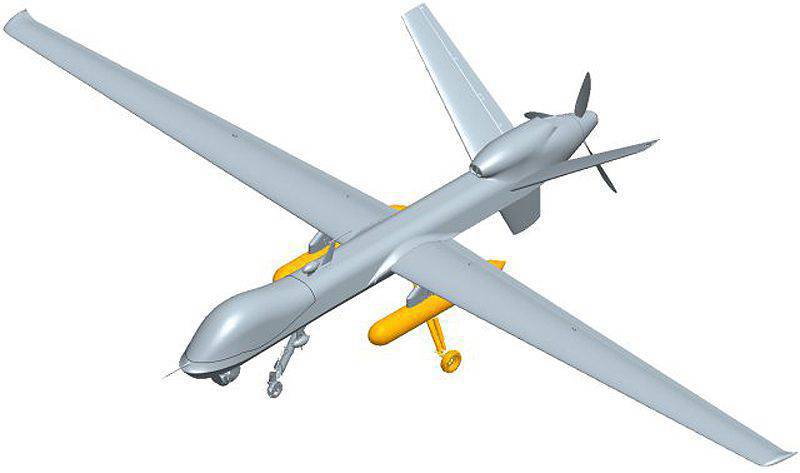
In February, 2014 of the year General Atomics received a contract worth 117,3 million dollars under the MQ-9 Accelerated Extended Range program to modify the 38 drone of the US Air Force to the increased range standard MQ-9 ER
So, according to the "Comprehensive Unmanned Systems Development Plan for 2013-2038 years" of the US Department of Defense in the middle of 2013, the 10 964 drone was in the registry. Group I (up to 9,0 kg) had 7332 RQ-11 Raven, 990 Wasp and 1137 Puma, all from AeroVironment, and 306 RQ-16 T-Hawk from Honeywell. In group II (9,0-25 kg) there was a Boeing / Insitu 206 ScanEagle. In group III (25-600 kg) there were 499 AAI RQ-7 Shadow, X-NUMX Expeditionary UAS Special Operations Forces, and Stua's 18 drones of the Marine Corps.
In Group IV (over 600 kg, below 5500 meters), the Department of Defense had XMUM XMUM-237 drone from General Atomics, 1 MQ-44 Hunter and 5 MQ-28 Fire Scout from Northrop Grumman.
All Fire Scout drones are currently designated as MQ-8C and are based on the Bell 407 package. Approximately 20 from 30 manufactured devices, including prototypes, belong to the US Navy and still fly, although they are scheduled for decommissioning in about 2018-2019 years.
The transition from a Schweizer 333 helicopter to a Bell 407 was determined by two factors. The first requirement for increased range was published at the beginning of 2009, and Schweizer’s own firm, Sikorsky, announced it would stop production of Schweizer 333. The new Fire Scout drone not only has a longer range and flight duration (10 hours on a hot day), but also a large payload. Now he carries the Flir Brite Star II optoelectronic station, but the tests with the Telephonics AN / ZPN-4 radar began in May 2014. The helicopter can also carry a Cobra multispectral mine detector and conduct radio intelligence. Fleet plans to buy a total of 119 Fire Scout C; The Marine Corps is also looking at some of the new features offered by option C.
The Fire Scout MQ-8C with its large range of action can now attract the attention of other states, especially those with vast coastlines, such as Australia. There he could carry out the tasks of the SH-60 helicopter at a significantly lower cost. In particular, for combating submarines, including the use of radio-acoustic buoys, the Fire Scout definitely has an extremely useful feature — a longer flight duration.
In Group IV (more than 600 kg, below 18 000 feet), the military has XMUM drone MQ-237 from General Atomics.
As for the Predator drones, here General Atomics is working on what it calls "Predator B certified by NATO." The goal is to offer a Predator B drone based on the Block 5 version of the drone with an increased range that will meet the individual standards of the NATO countries and their airspace. “Certified B” will have a dual radar protection system (false targets) and of course a collision avoidance system (known as Tcas). A dual recognition radar is currently under development and undergoing flight tests. It is able to detect what is defined as “cooperating” and “non-cooperative goals.” The drone is also being upgraded to increase energy production and flight duration. General Atomics intends to get a new unit ready for 2017 or 2018 year.
In group V (more than 600 kg, above 5500 meters) there were 112 MQ-9 Reaper from General Atomics and 35 RQ / MQ-4 Global Hawk from Northrop Grumman.
The aforementioned development plan explains that although the development of American drones will focus on technologies that ensure dominance on the A2 / AD principle (anti-access / area denial - access / zone blocking), decisive opponents will take on important, less protected areas, such as South Asia, Africa and the Middle East ", where existing funds may remain in service, but enemy unmanned systems will impede their work.
The report says little about the new types of American drones, although it mentions the idea of a small drone, similar to a bird, which can sit and observe, as well as recharge itself from power cables. Some may find it unrealistic, referring to the UAV Forge crowdsourcing competition under the auspices of Darpa in 2012 to create a portable reconnaissance drone with over-the-horizon communication channel capabilities. By the beginning of the demonstration flights from the 140 teams, 9 teams remained, but (partly due to communication problems) no drone could land on a flat roof in the target area and complete the mission, so no one had received a prize in 100 000 dollars.
However, the research laboratory of the US Air Force continues to cherish this dream and funds academic and commercial organizations to develop biomimic modules for artificial birds that can conduct observations from the roof of a building or power lines or tree branches.
On the recently shown video frames, a quadrocopter was shown, sitting down and fixed on a tree branch. His birdlike legs were developed by Dr. Bhargav Gajjar from Vishwa Robotics. At the next stage, it is planned to combine the system of legs with a remotely controlled drone, resembling a kestrel.
The next series of tests X47-B includes taking off and landing on an aircraft carrier at night and refueling in the air
If the picture should illustrate the interaction of man and machine in the military conditions, then it should be like this: a man in a yellow jacket on the left signals with his hands and “talks” with the plane. As if magic plane obeys, but only thanks to a man in green uniform, who issues commands (as if he were inside the plane) using his remote control unit.
UCAS D
Before moving on to the Uclass program, at this stage it is necessary to say a few words about UCAS-D. The initial goal of this program is to demonstrate the ability of a tailless and inconspicuous aircraft to operate from an aircraft carrier with all the radio frequency interference it creates. To date, all the achievements of Northrop Grumman are related to the fact that the X-47 B drone performed all the tasks “in exactly the specified space”, if you use the words of the company.
The first of the two X-47Bs built for the first time took off on February 4, 2011 and first took off from the ground with a catapult on November 29, 2012 at the Pax River Naval Aviation Ground. But a really serious test, different from take-off from the deck, would be to return to the deck and capture by the aerofinisher. This one really historical The moment took place on July 10, 2013 on the nuclear carrier George HW Bush (CVN77). During testing, the aircraft sequentially landed on deck by being captured by a third aerofinisher.
The next stage of the program is the study of interaction with another aircraft in conjunction, which could be called a combination of a drone and another aircraft from “ordinary life”. At first, this will be somewhat more complicated than one could imagine, especially as regards the human factor. Also part of this stage is to check how a single bundle during the test will respond to worsening weather conditions.
However absurd it may sound, but for a “blind” aircraft, for which there is no difference day or night, a series of night operations are also planned. In fact, in a few seconds you realize that people, and not the plane, will be subjected to more serious testing, because it will be the most difficult for them during the night tests. Indeed, if an adequate and fast response is not developed in such a dense and tense battle space (especially for night conditions), a catastrophe can happen rather quickly.
The current plans are to keep the two vehicles in operation and further on to the 2015 of the year with the intention of exploring the possibility of reducing risks in future programs, in other words, continuing to climb the interaction curve of the drone and the aircraft carrier. Another direction is the study of the possibility and demonstration of autonomous refueling in the air. The second plane can be equipped with the necessary systems; the ultimate goal is to conduct tests of the “wet” type, including the actual transportation of fuel.
The U.S. Navy plans to begin a stealth technology demonstration program drone UCLASS (Unmanned Carrier-Launched Airborne Surveillance and Strike - unmanned reconnaissance and strike vehicle taking off from the deck of an aircraft carrier), perhaps like this Lockheed Martin project
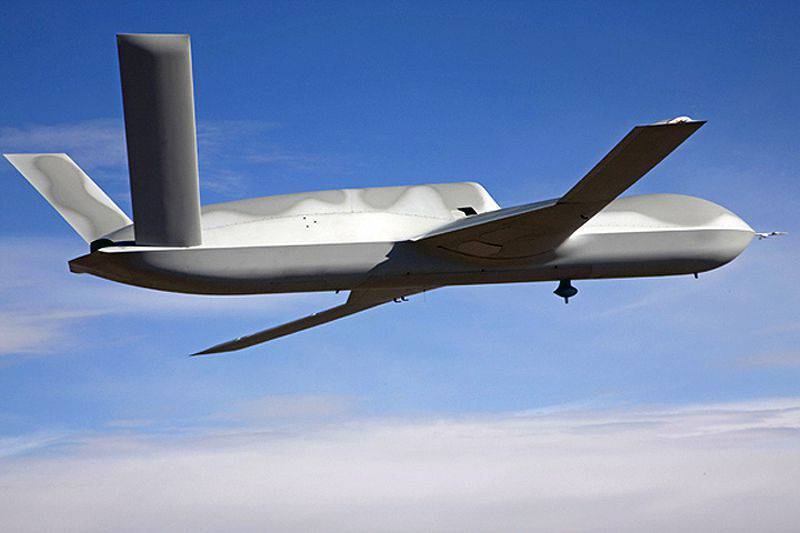
The contender from the company General Atomics for the US Navy Uclass program - low-profile drone Avenger; To date, three prototypes have taken to the air. In the picture, the drone has an elongated fuselage. The fourth drone for the USAF was supposed to take off in 2014 year
UCLASS
In the Integrated Development Plan for unmanned systems, a fundamentally new Uclass project (Unmanned Carrier-Launched Airborne Surveillance and Strike) is mentioned - an unmanned reconnaissance and percussion vehicle taking off from the deck of an aircraft carrier) US Navy, which should become the first drone actually deployed (unlike the prototype) on an aircraft carrier.
In August, 2013, the Navy Aviation Systems Command, issued nine-month 15 contracts worth millions of dollars to Boeing, General Atomics Aeronautical Systems, Lockheed Martin and Northrop Grumman for the Uclass aircraft. These contracts led to the release of the project's request for proposals for the technology demonstration program (TD) Uclass in the spring of 2014, but the companies involved in the project could not provide any details. It is clear, however, that the final requirements will still be drawn up and presented.
The US Navy plans to invest roughly 3,7 billion dollars in the Uclass TD program in the period from 2014 to 2020 a year. In accordance with the initial stage of development capabilities Uclass will be designed, manufactured and deployed from 6 to 24 drones. The first flight is scheduled for the beginning of the 2017 of the year, and testing at sea should begin at the end of the 2019 of the year. Initial alertness is scheduled for 2020 year.
However, since the US Navy views Uclass as a technological development program, they do not plan to move to the final design and implementation phase of production before 2020 of the year (at this stage supervisory procedures should be carried out on cost, schedule and performance) .
The main fiscal control is not very pretty with this approach fleetwhen he shies away from supervisory procedures, and especially since Uclass is very dependent on the development and delivery of other tools, such as software for a common control system and JPALS (Joint Precision Approach and Landing System) .
Disagreements arose after the Joint Requirements Surveillance Council in December 2012 reduced Uclass visibility requirements, eliminated mid-air refueling and reduced the bomb load from 24 115-kg of GBU-39 SDB bombs to only two 225-kg of bombs. While the original concept envisaged the creation of a long-range strike aircraft capable of attacking ground targets while the aircraft carrier remained at a safe distance, the emphasis at the moment appears to be on constant surveillance and reconnaissance in counter-terrorist operations in airspace with low density enemy air assets. Uclass drones on an aircraft carrier must be able to support one reconnaissance UAV at a distance of 2200 km or two UAVs at a distance of 1100 km or attack weakly protected targets within a radius of 3700 km.
The “cuts” in Uclass capabilities were most likely caused by two reasons. The first, its original concept turned out to be so expensive that it could be canceled, and the second, its appearance began to threaten the programs of manned aircraft. Another theory is that the Uclass long-range strike capabilities have already been given away by the Pentagon to another secret ground-based drone of the US Air Force.
The famous Skunk Works, working with Piasecki Aircraft, is the flagship project Darpa, which was called Ares. The goal of the project is to create a means of delivering supplies to offshore platforms, advanced areas and special forces.
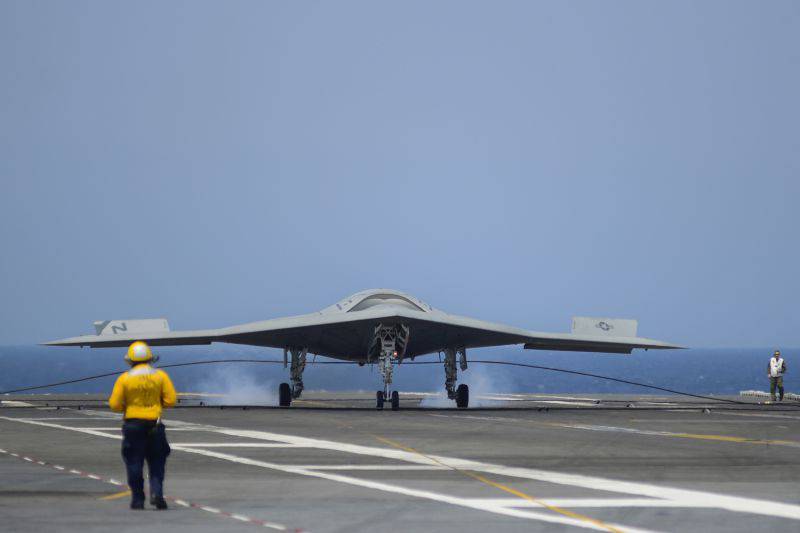
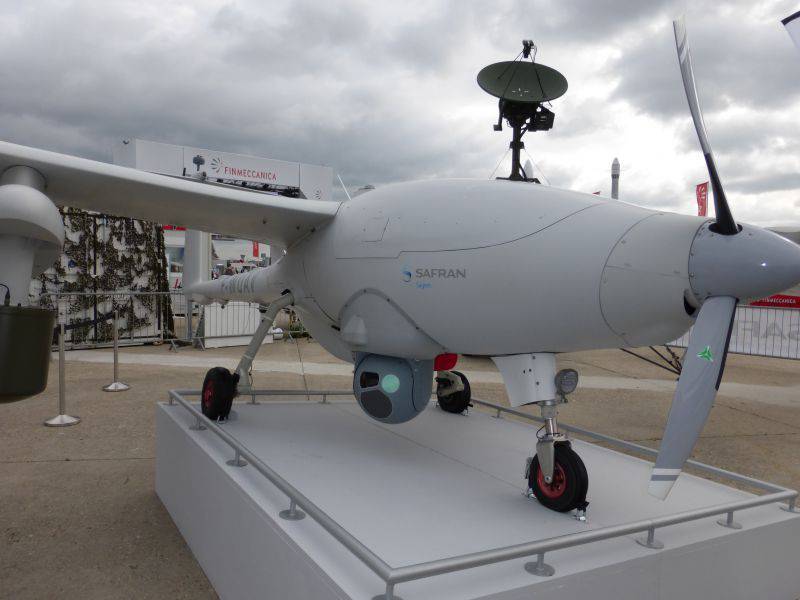
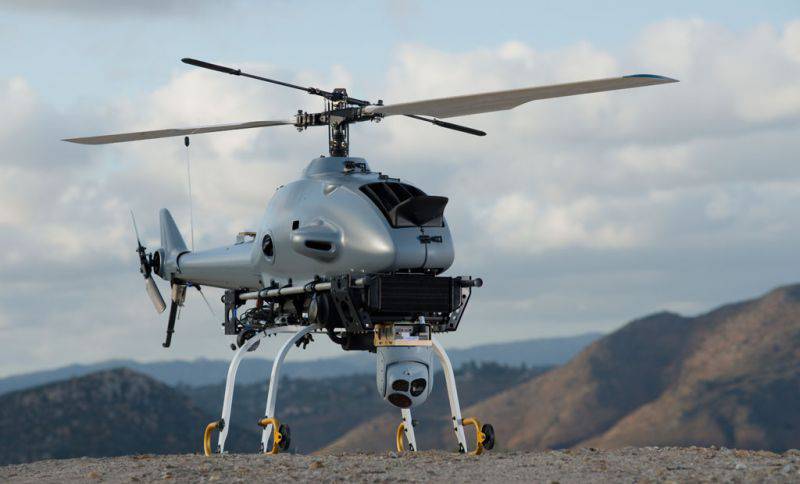
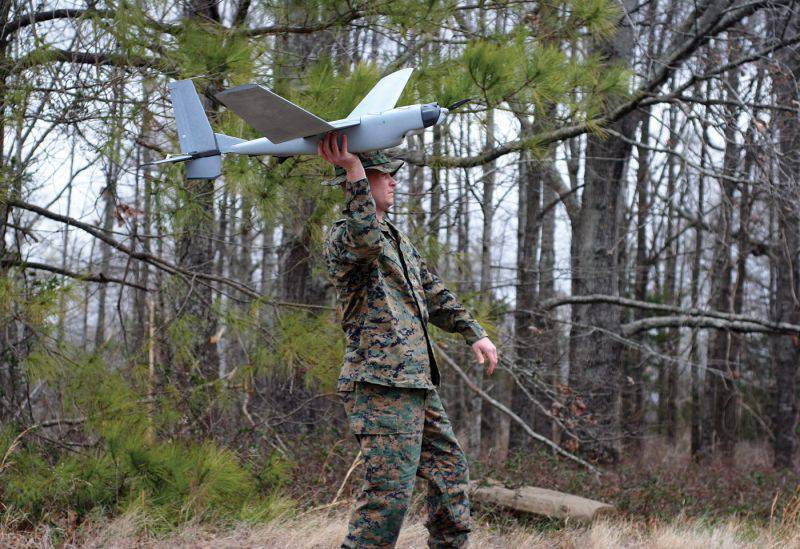
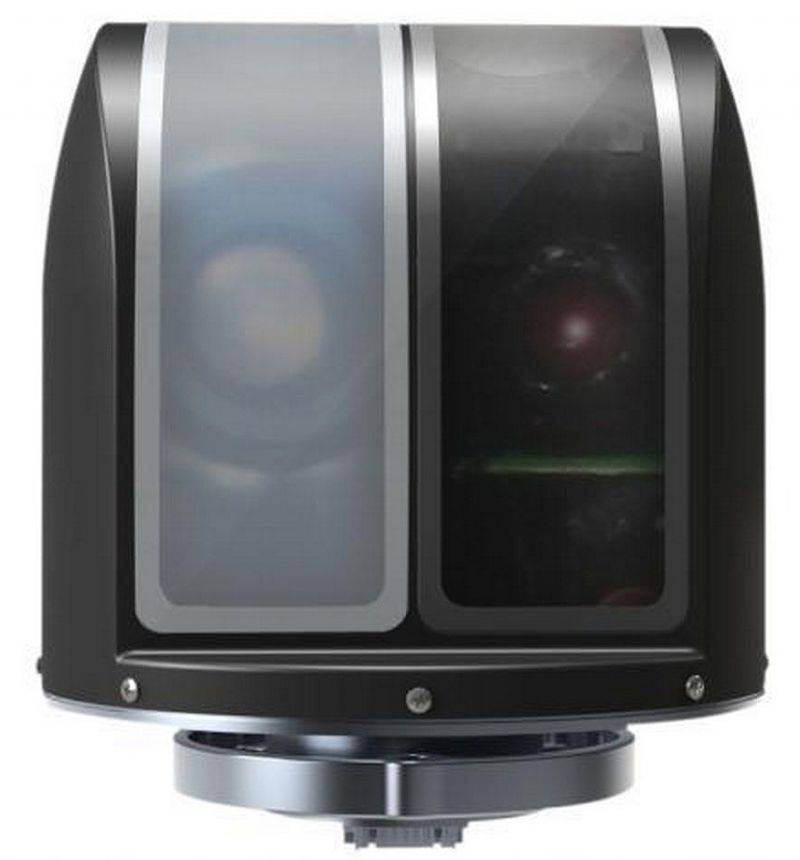
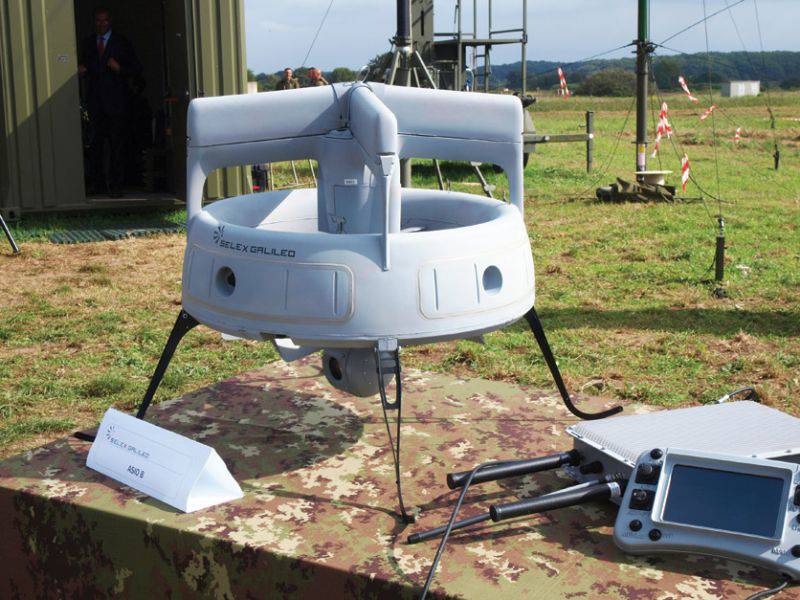
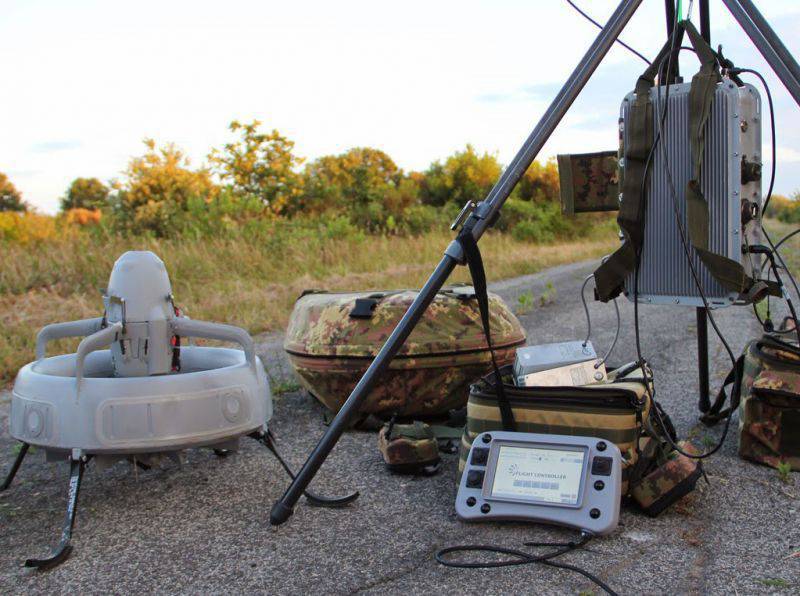
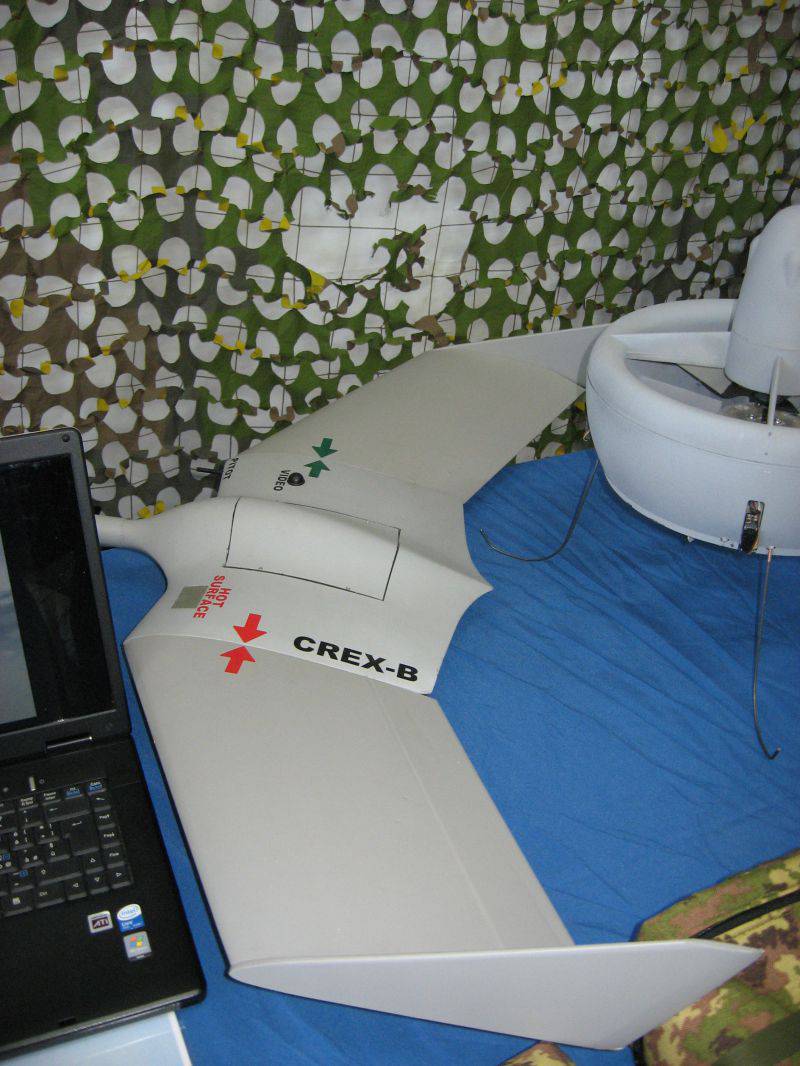
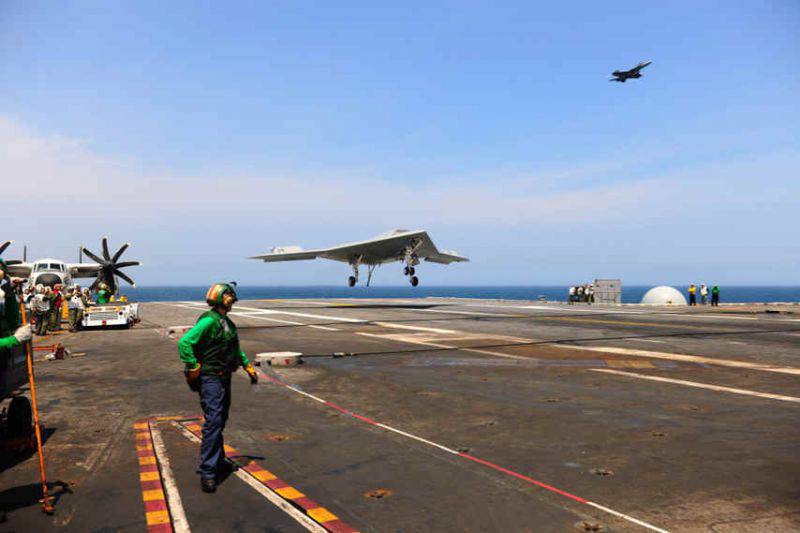
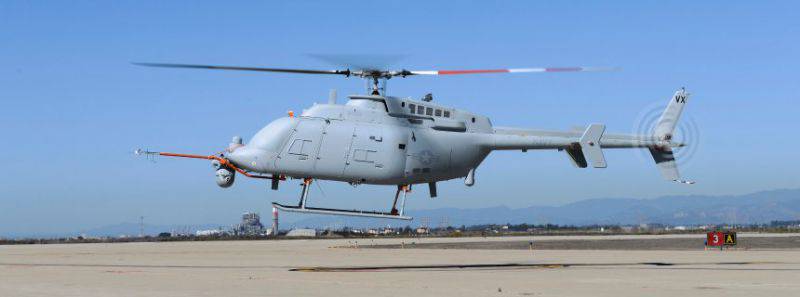
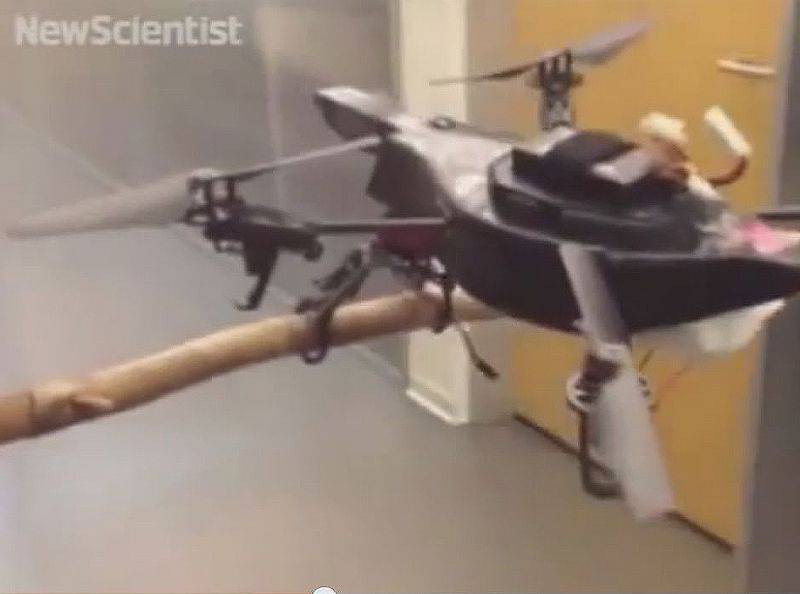
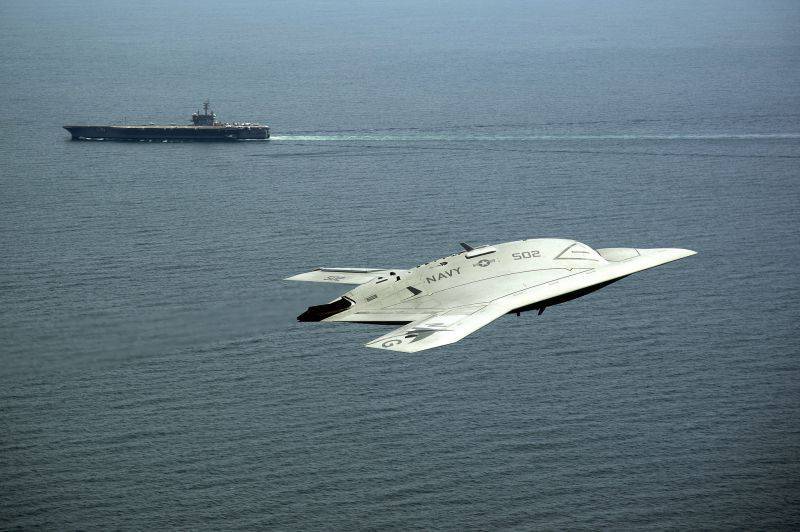
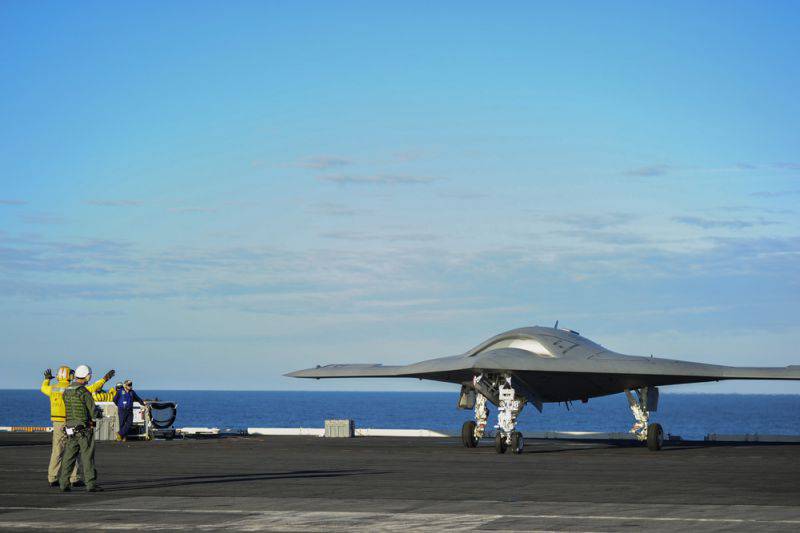
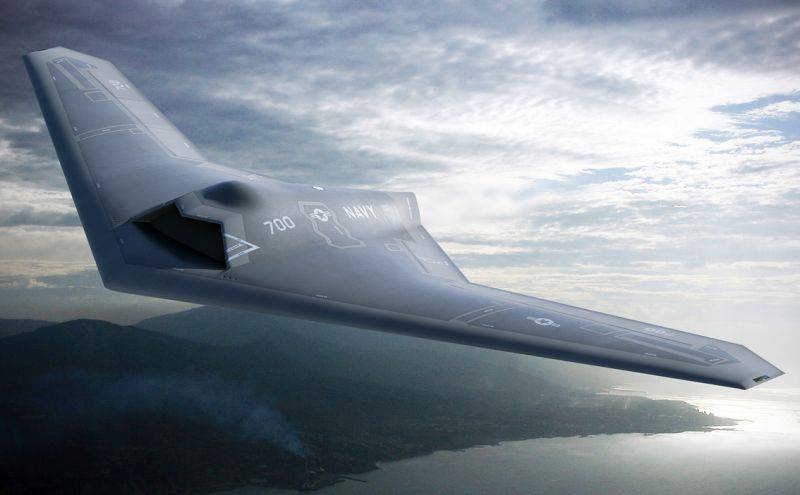
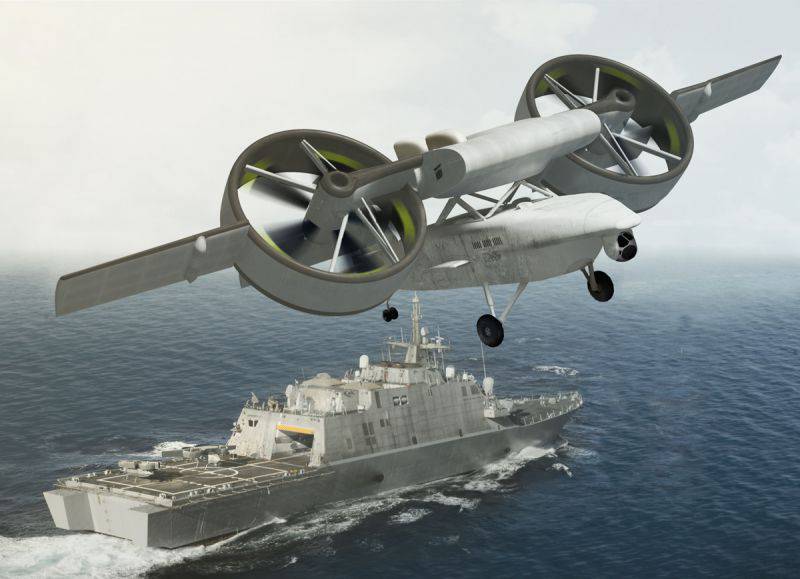
Information